Replay2, Vampire V4 and DE10-nano (MiSTer)
I made some comments in a post here regarding FPGA selection for Replay2
One of the reasons we have been targeting the Arduino Vidor board is to get a low-cost alternative for Replay1 for people to play with – that is actually available. The other reason was to force the restructure of our code and build a system where we could use a common library of components and target different hardware relatively easily. I think we have just about achieved this, and you’ll see the results as the repositories go public.
Given the huge amount of cores available for MiSTer (based on the DE10-nano) board, there would be little point launching Replay2 unless we had a similar range of cores, and we are working to bring both our stuff and 3rd party cores into our framework. I’ve been approaching people asking if they are ok with this, and I’ve been receiving loads of stuff back – sometimes based on things I did years ago and forgot about (Asteroids is one example)
The DE10 board has skewed the whole market as it’s an amazingly large device for a small price ~ 118 Euro. It contains a Cyclone V FPGA with about 160K flops and a dual core A9 ARM CPU.
The device on the Vampire V4 (an Amiga FPGA system) is also a cyclone V containing about 116K flops, and no CPU. They have added DDR3 memory onto the FPGA – the MISTer has SDRAM plus DDR3 on the CPU side.
I don’t know the price of the Vampire yet, but it’s not easy making low volume hardware and I guess it will be 5 times or more the price for the DE10-nano. We have the same problem with Replay2. Not much point making another Cyclone V board, the market is kinda saturated. The Xilinx Zynq1 is slower/smaller and old, so the only real option is the Zynq ultrascale. This is a fast device, but expensive and currently all but the smallest device (2CG) will be too expensive. The 2CG is smaller than the CycloneV, but has DDR4 memory, display port and USB3 so it’s still my favourite option.
The thinking being if people are prepared to pay for a Vampire 4 when MiSTer is available, there should be a market for a multi-platform Xilinx based platform.
The nice thing with the new build system is I can easily take a library module and run it through the tool to get an idea of timing. Here I ran my M68K core (TG68K derivative) thorough Xilinx Vivado.
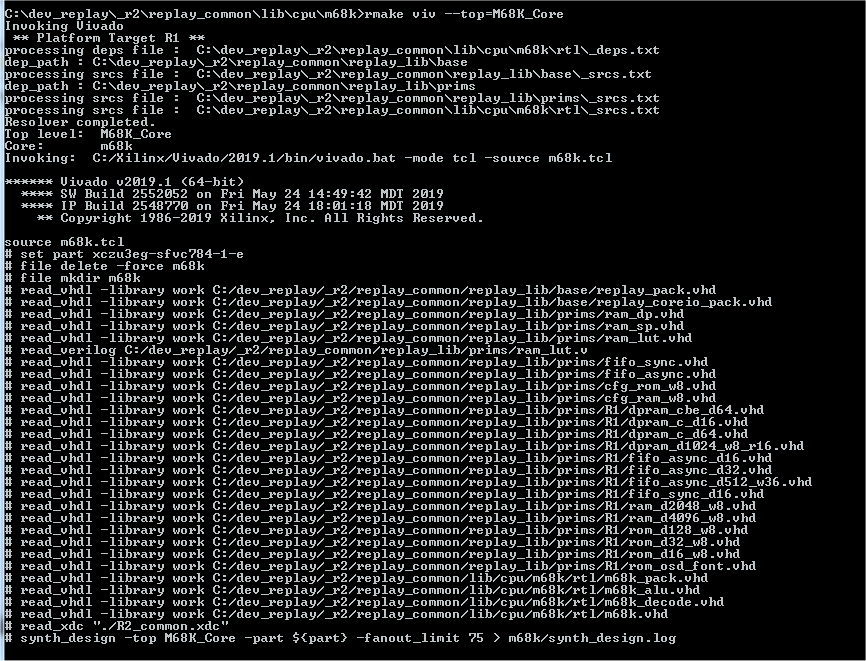
The CPU core runs with a single cycle cache at 28MHz in my Amiga design on Replay1. On the ultrascale it comes out at around 70MHz without any optimization so I think we can compete with the Apollo core used on the Vampire.
We are also looking at hybrid emulation – this is where the 68K emulation is done on the A53 ARM core, but also investigating RiscV and JIT 68K emulation on the FPGA.
The RiscV, with a little extra hardware support for EA calculation, looks to be suitable for running 68K code – and the CPU cores run at 200MHz plus in the FPGA, and connect directly to the AXI interface to DDR4 memory.
If Xilinx are being nice to us, I would like to use the 3EG Zynq+ which contains a GPU. The idea of an FPGA based Amiga with GPU graphics is quite interesting.
Another option we are investigating, and one which gives more bank per buck, is connecting a Kintex7 FPGA (which are available dirt cheap in China) to an RK3399 CPU. These CPUs are available for around $20 and have a far more modern GPU than the Zynq+ and dual A72 cores. There are also simplifications in software development by keeping the CPU and FPGA separate. The downside is we lose the close coupling of the FPGA and CPU – however one idea is to connect the Kintex to one of the processor DRAM controllers.
This is something I’ve done before in my teleco work. Essentially the FPGA pretends to be a DRAM, and the CPU reads/writes without noticing the difference – although slower than a real memory but far faster than using QSPI to communicate. This would allow similar bandwidth to the ZYNQ+ AXI interconnect (although with slightly higher latency), a more modern GPU and CPU, at a significantly lower price point. Crazy eh?
Simulation continues, but I do like the simplicity of the integrated Xilinx SOC. We also need to see what Intel are coming up with, the Cyclone V SOC is rather old now.
/MikeJ
Vidor USB debug
Here “Erique” the world renowned Amiga demo coder is doing some actual hardware debug. I think he got a bit over excited if I’m honest….
The Vidor currently has some limitations with it’s USB OTG support, primarily connecting a hub doesn’t work. This is rather useful if you want to connect both a keyboard and mouse simultaneously.
A parallel track is to add a MAX3421E which works correctly. This work is important in abstracting the way the ARM talks to the FPGA. For example on Replay1 the mouse and keyboard come in on ps/2 direct to the FPGA, but on Vidor for the moment they come in over USB through the ARM to the FPGA via SPI. The framework handles these differences transparently for the core.
This scales to the Zynq Ultrascale where the CPU and FPGA are on the same die, connected with a high bandwidth AXI interface.
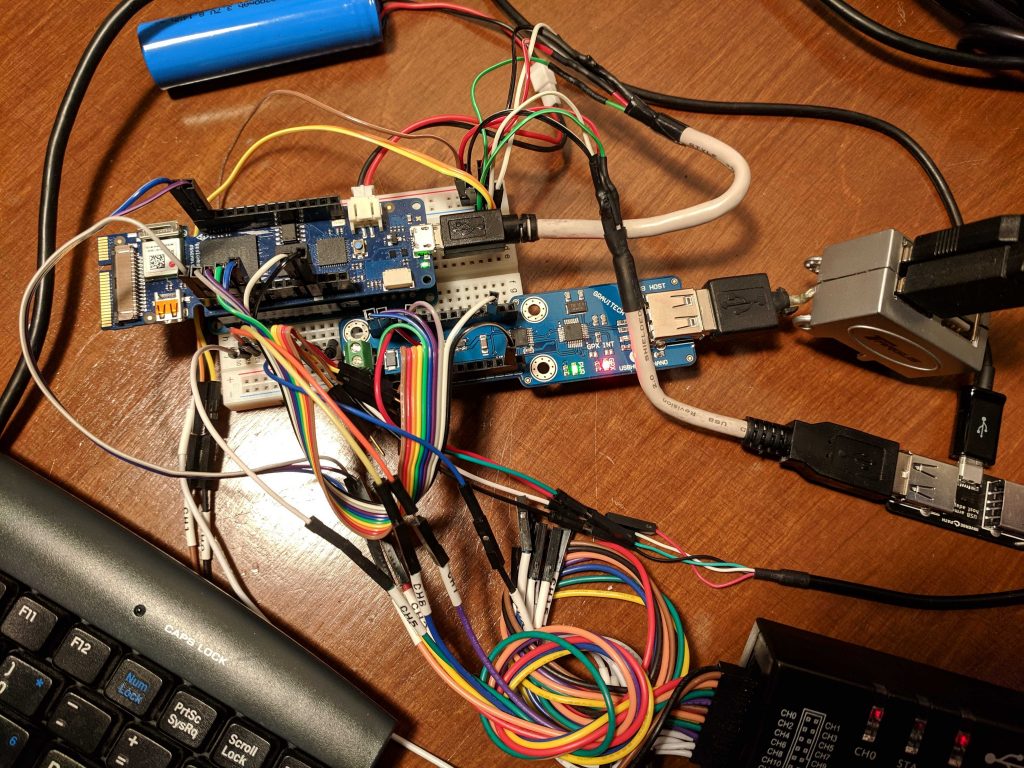
Replay build system
Coming from an ASIC background, I generally don’t use the FPGA tool IDEs. Sure they have a place for debug, but for consistency especially when using source control systems, scripting is the way forward. Both Intel and Xilinx have good support for TCL in their tool chains, but I find this a bit cumbersome.
I’ve built a set of python scripts called rmake, which can be used to both simulate and drive the FPGA vendor tools with minimum pain. It also makes it really quick to play around or add new cores.
If we look at Loader, a simple reference design which uses the Replay framework. This core shows how to provide an OSD (on screen display) over a video background picture stored in DRAM. It can also play audio samples from the sd-card, a path which is more commonly used for hard / floppy disk emulation.
These are all the source files in the core/rtl directory:
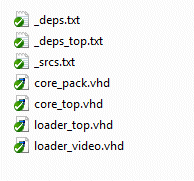
_src.txt contains :
loader_video.vhd
loader_top.vhd
core_pack.vhd
core_top.vhd
and _deps.txt:
[R1] replay_common/replay_targets/R1
[V4] replay_common/replay_targets/V4
The support files which are common to all cores are in the replay_common repository. The [R1] and [V4] allow changes based on the build target.
From the core directory I can do :
rmake sim which will create a local work directory and compile all the files for Intel Modelsim
rmake ise –target=R1 will call the Replay1 XIlinx ISE flow and produce an FPGA file
rmake qrt –target=V4 does the same for Intel Quartus for the Vidor 4000
and we can also rmake viv for Xilinx Vivado, targeting the Zynq Ultrascale currently.
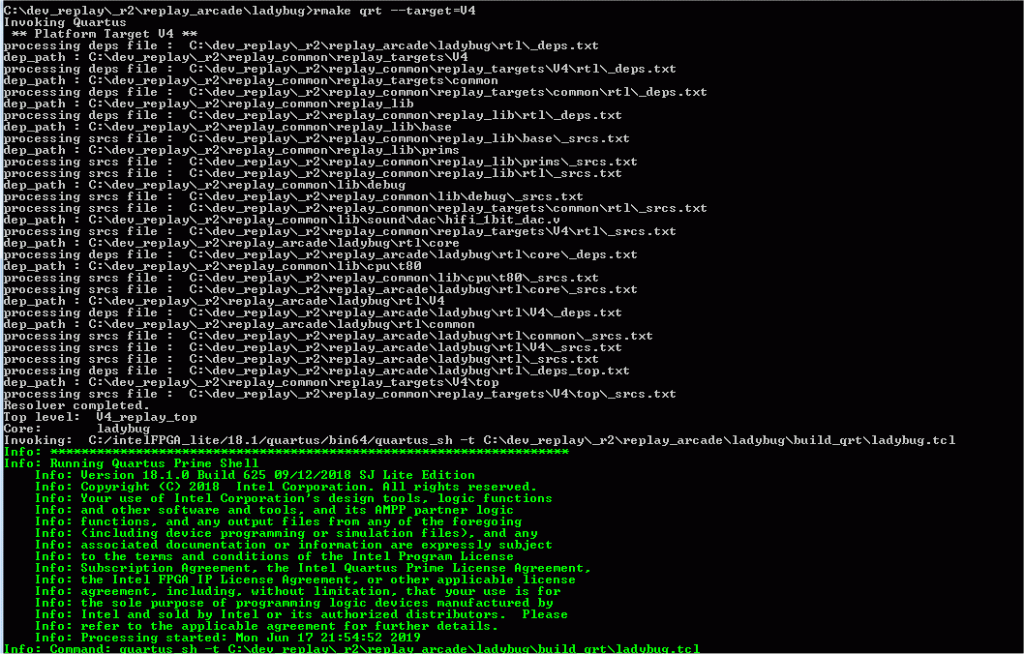
Cool eh?
Having the same build system for simulation makes it really easy to test the cores. The build system has /tb directories for each target which include a model of the board including DDR (Replay1) or SDR (Vidor) memory and can capture and store the video output to a file. Here is the result of simulating one frame of the Loader core :

Arduino Vidor 4000 springs into life
The very talented Arnim Laeuger has been working with our new Replay framework to bring his games to the Arudino Vidor 4000 FPGA platform (called V4 from here down)
The Vidor is a low cost FPGA board available here : https://store.arduino.cc/mkr-vidor-4000
To support the cores, the firmware which runs on the Replay1 board ARM can now be built for the SAMD21 within the Arduino IDE.
We have abstracted the FPGA framework and created a build system so that the same core can be built for the V4 and the Replay1 board, as well as the up-coming Replay2 board.
Here we have the Videopac core with KC Munchkin on V4
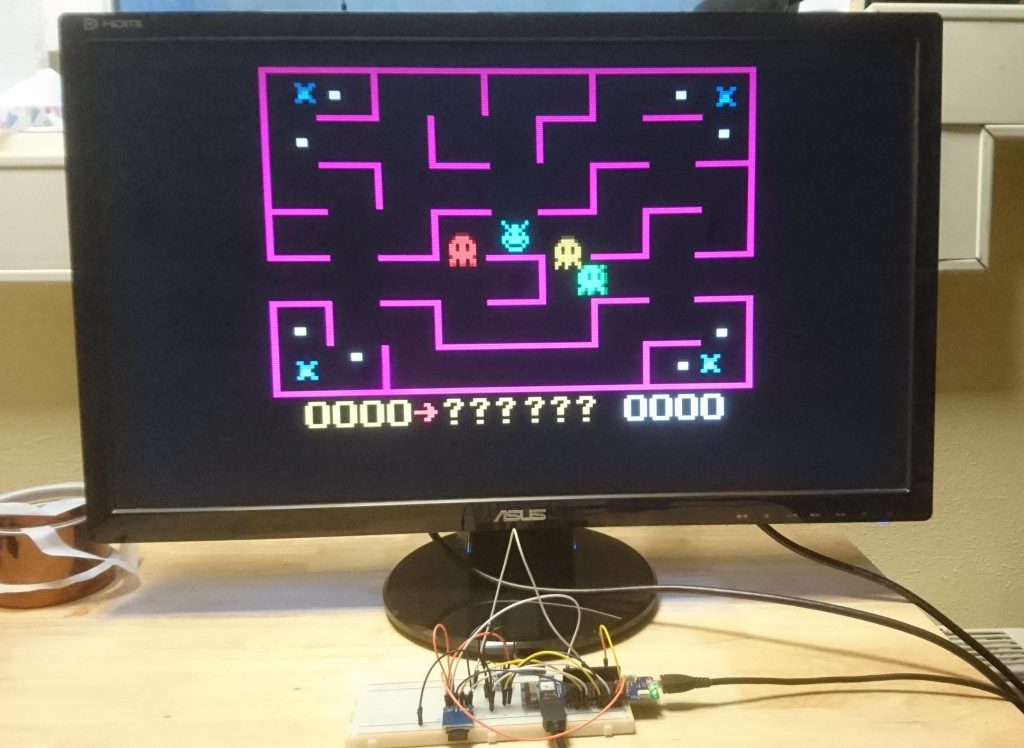
And here Colecovision Frogger on the V4, with Frogger on Replay1’s Videopac core in the small picture.
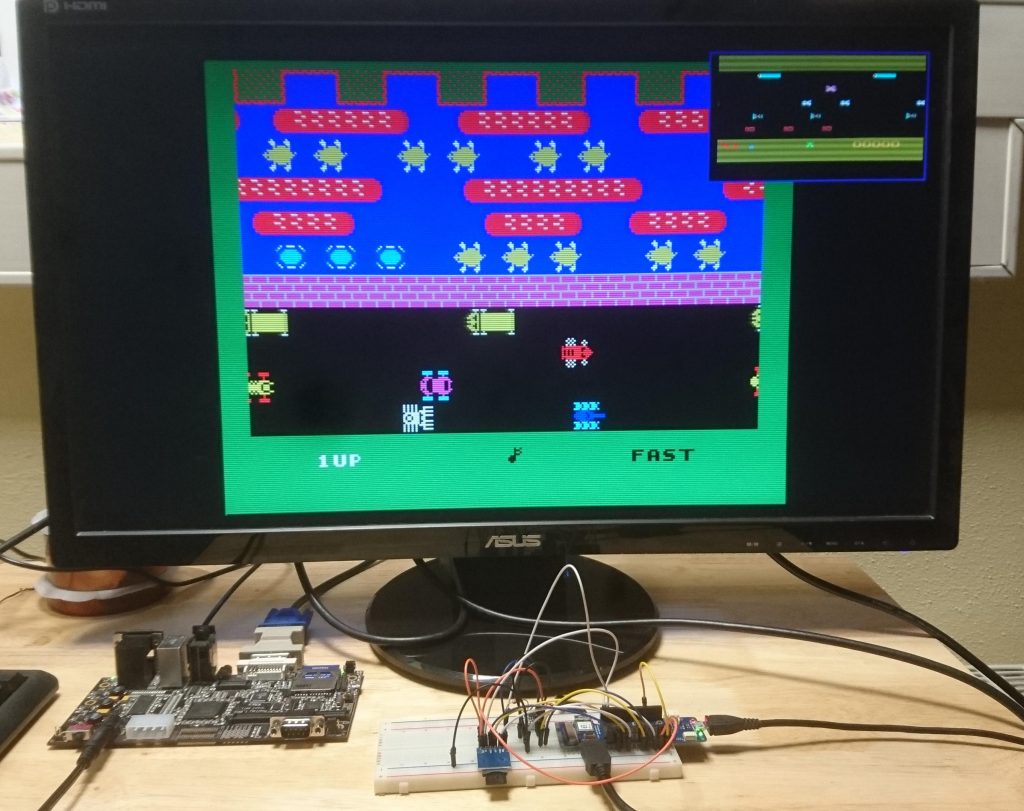
Ignore the configured time here, we had a bug….
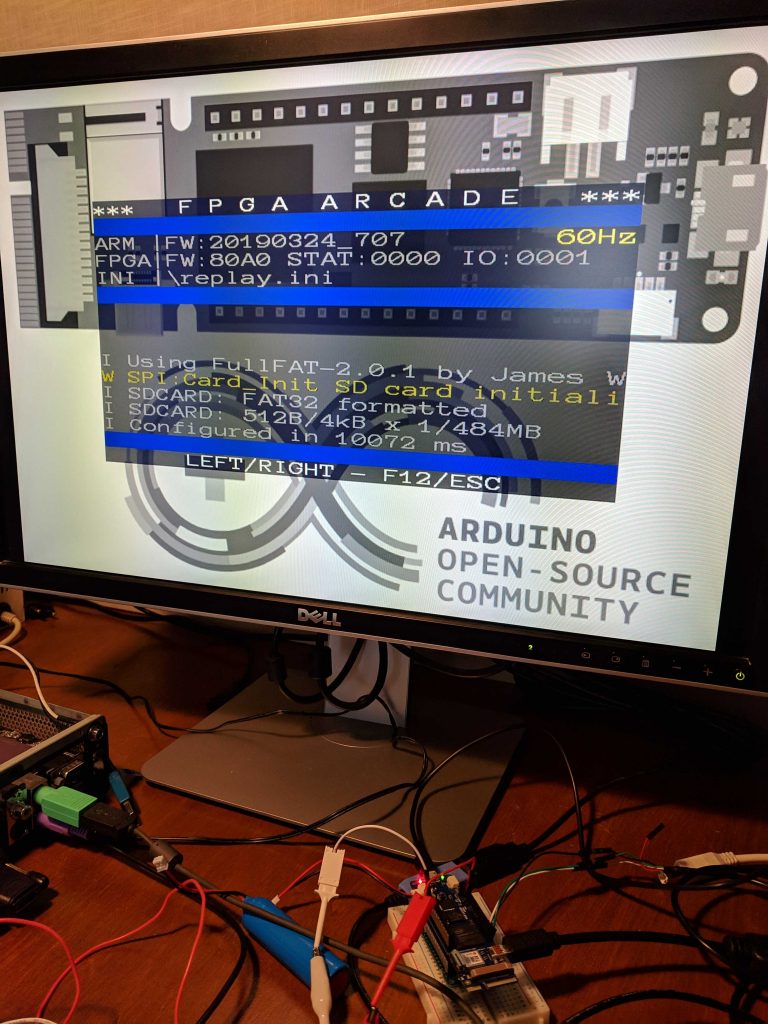
We’ve started to put some binary releases here on github here, https://github.com/fpgaarcade
Our aim is to include every FPGA game we can find (including lots of my own stuff which never made it onto Replay1) into this new framework and publish it asap.